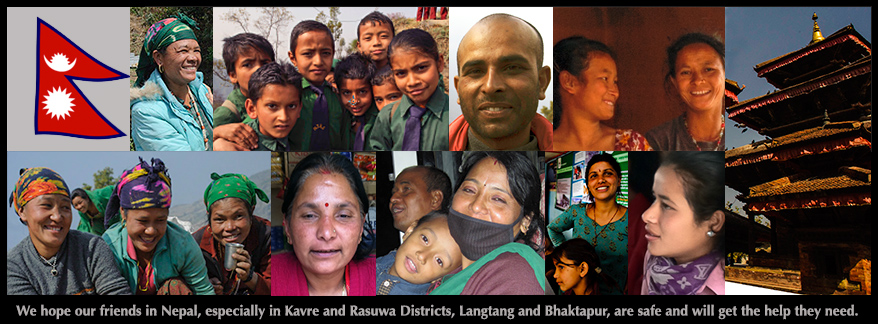Climate Photo of the Week
U.S. government gives Shell Oil permission to resume drilling in Arctic. Shell can only drill shallow holes now, using only one drill rig at a time. But sinking wells deeper, where oil reportedly lies, could begin when repairs are finished on required support icebreaker. Environmentalists call decision ”reckless” and “misguided;" vow to keep fighting.
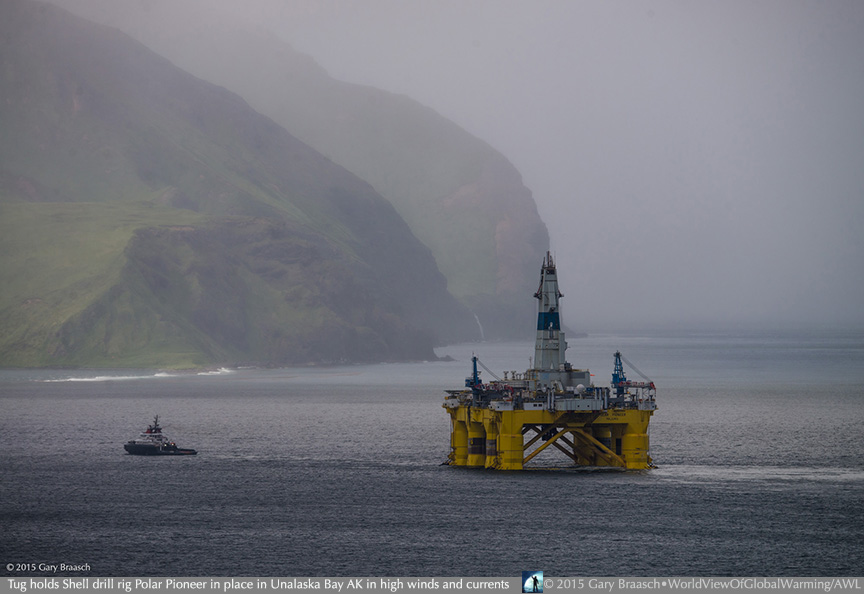
Royal Dutch Shell has gotten permission from the U.S. Government to continue its relentless drive to drill for oil in the Arctic Ocean off Alaska. The Interior Department issued conditional approval of two Applications for Permits to Drill (APD) to conduct limited exploratory drilling activities in the Chukchi Sea offshore Alaska. The go-ahead limits Shell to drilling only the top sections of wells and prohibits drilling into oil-bearing zones. Shell is not permitted to drill into oil zones because safety and oil spill prevention regulations require that a capping stack to seal a leaking well be on hand and deployable within 24 hours — but that equipment is on the damaged icebreaker Fennica which is returning to Portland OR for repair. Shell can apply to go for oil when that ship is back in the Arctic, which would be the first deep petroleum wells in the American Arctic Ocean.
The Natural Resources Defense Council said Interior’s okay is a "misguided decision that lights the fuse on oil spills and climate disruption.” "What happens in the Arctic matters to us all." NRDC’s Franz Matzner said. "America is living with the floods, storms and heatwaves caused by climate change, and drilling for and burning more oil will only make it worse for our children – and for every succeeding generation.” "The risks of a devastating oil spill in this harsh environment are just too great, particularly for a company with such poor performance record,” said Center for Biological Diversity Alaska Director Rebecca Noblin. "This is a reckless move.” Even before the permit decision on July 22, many including U.S. Senators and Al Gore have strongly criticized the Obama Administration for allowing an “insane" Arctic oil drilling permitting process despite the government’s increasing limits on other fossil fuels — and the growing importance to slow climate change by employing renewable energy to replace an increasing amount of oil and gas. Royal Dutch Shell, obviously, thinks otherwise and has spent billions of dollars on its bet that the world will not reduce its burning of petroleum.
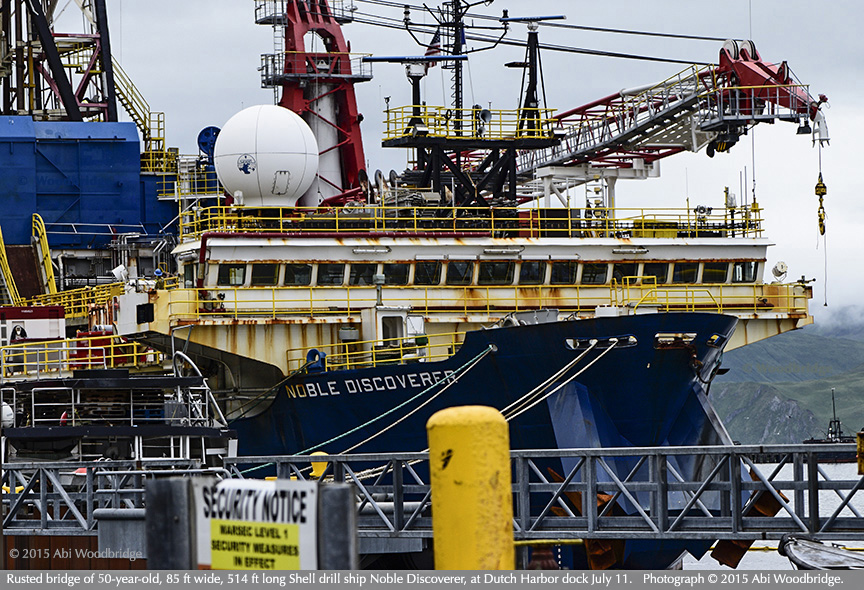
Shell bought 6 Federal oil leases about 85 miles off the NW Alaska coast in the Chukchi Sea during the G.W. Bush Administration, was allowed to do preliminary drilling in 2012, but suffered embarrassing serious technical and navigation errorss that resulted in loss of one drill rig, millions of dollars in fines, and increased regulation by the Interior Department. Shell is again using the 514 foot long Noble Discoverer, a nearly 50 year old and rusty-looking drillship -- the same enormous rig that ran aground after dragging anchor in Dutch Harbor's Hog Island channel in July 2012 before heading up to the Chukchi sea for preliminary drilling. This year, the Discoverer and most of the rest of Shell’s 25-plus ship Arctic drilling fleet, including the 300 ft tall floating drill platform Polar Pioneer, were expected to arrive on the drill site 85 miles northwest of Wainwright AK by July 24. Under other provisions of the conditional approval, Shell may use only one drill rig at a time, to protect whales and walruses which inhabit and migrate in the drilling area. The rigs will float above the well sites in about 140 feet of water, and are allowed there only between now and the end of September, when winter ice could begin to form. Shell also has placed required emergency oil spill boats and equipment in Wainwright and Kozebue, and in Barrow, from which Shell will fly aerial supply and personnel flights to the rigs.
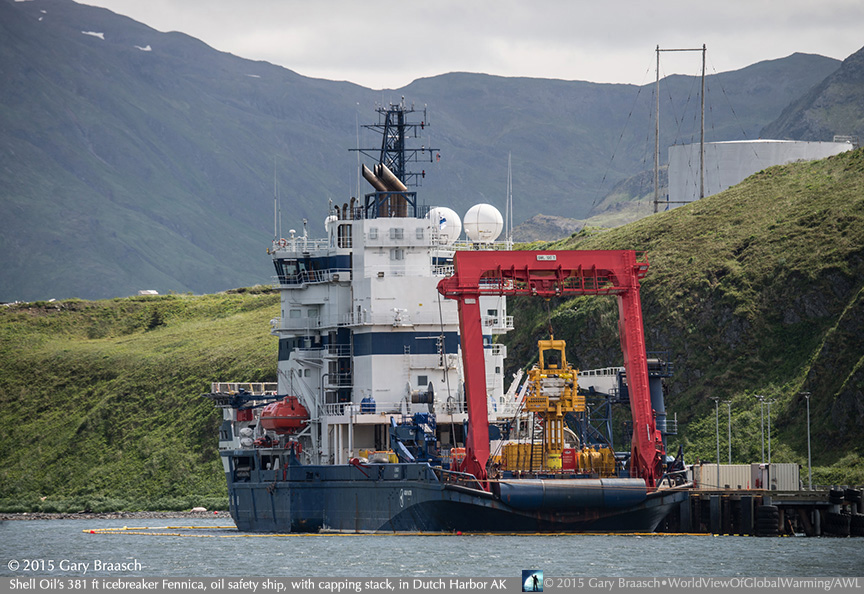
A number of Shell’s armada of drilling support and spill recovery ships were also in Dutch Harbor and nearby waters, and they all are on their way or soon will be, to the drilling site. One of them, the 381 foot Finland-built Fennica, an icebreaker carrying a capping stack that would be used to stop any possible oil leak at a well head, suffered a 39 inch gash in its hull while leaving for the Chukchi Sea, and aborted its departure. As it had moved back and forth from its mooring off Dutch Harbor to fuel and supply docks with a local certified pilot at the helm, the ship apparently sailed repeatedly near very shallow shoals which had not been surveyed recently but are known to local mariners. No definite cause of the hull gouge has been announced. The environmental NGO Oceana, which published a chart with Fennica’s route, and some commenters on a mariners' blog, criticized Shell’s ship operations in the relatively narrow, shallow waters. While NOAA and other federal investigators look into the incident, Fennica is bound south for repairs in Portland Oregon. The capping stack she carries is required to be at active Arctic Ocean drill locations in case of blowout or well leak, and her icebreaking capabilities are part of Shell’s plan to deal with Arctic sea ice.
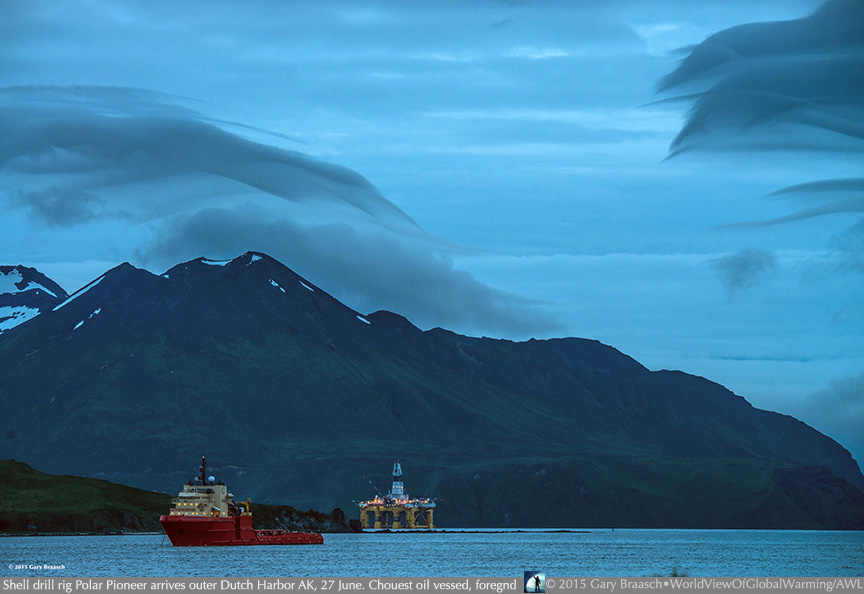
In contrast to the active protests, “kayaktivist” flotillas and native American opposition in Puget Sound, there were no apparent protestors at the arrival in the Aleutian Islands. However, the next day signs briefly appeared on a stack of crab pots along the shore facing two Shell oil service boats in the harbor, reading “ Fish Yes. Shell No.” The “Shell No” was almost immediately ripped down, according to those who saw the signs; the “Fish Yes” sign remains (see below). Weeks later at a public meeting in Unalaska partially organized by two Greenpeace members, many citizens expressed concern about the drilling and Shell’s heavy presence in town and the harbor. People in Unalaska reveal a wide range of opinions about Shell’s operations here, from full support because of money it brings in and the “need for oil,” to impassioned opposition. Unalaska’s long time economic base is fishing, crabbing and fish processing which employ about 4000 people.
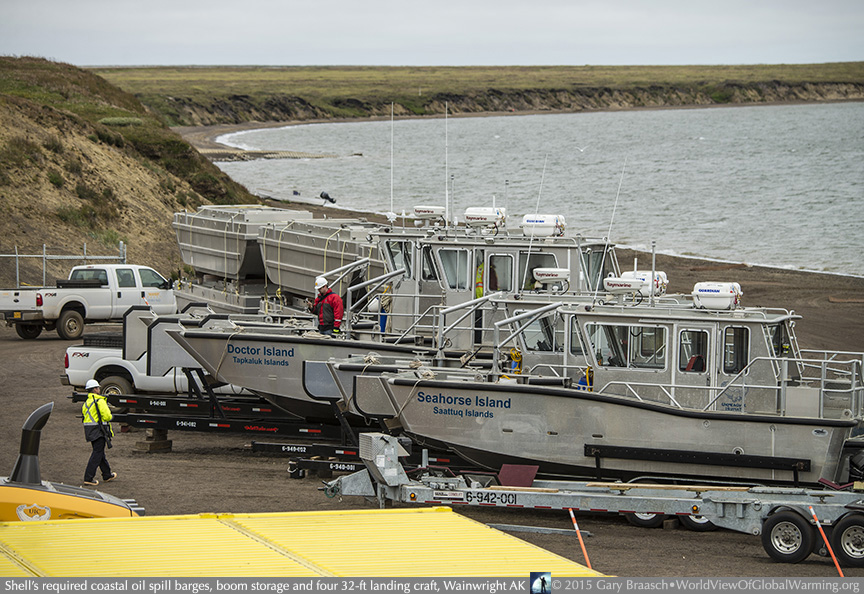
Meanwhile in Washington DC, environmental groups represented by Earthjustice lodged a complaint with Interior Secretary Sally Jewell that Shell’s tentatively approved drilling plan violates "an explicit condition” of the 2013 governing regulations allowing companies to disturb walruses, seals and other animals in the region. The regs require drill rigs to be at least 15 miles apart, but Shell’s planned locations are only 9 miles distant. Resolving this, which is part of the issuance of a Federal permit to disturb protected marine mammals, is among the last items Shell needs to begin drilling.
More from Alaska and Dutch Harbor here. Previous coverage of Shell’s Arctic drilling attempt and its opposition is here and here. Support for coverage in Alaska is provided by the Alaska Wilderness League. Thanks to Abi Woodbridge of Unalaska for information and photographs.

Update June 29: The person in Unalaska who mounted the “Fish Yes! Shell No!” banners along the waterfront after the Polar Pioneer arrived, is Suzi Golodoff, a 40-year resident, widow of a native Aleut and author of the book Wildflowers of Unalaska. She said making the public statement was “a natural thing to do” as a citizen, and said the arrival of Shell’s flotilla of at least 10 ships was “like an invasion” of the local community’s fishing grounds. “This is a fishing town,” she said, not an oil town. Golodoff issued a statement through her nephew Kurtis Dengler:
"This planet, and the Bering Sea in particular, has been so good to me, that I feel a loyalty to make a stand against human greed and foolishness. That's why I for one am opposed to Shell. Look back and ask, since when does offshore drilling and Big Oil go along with healthy renewable fish stocks in Alaska? We are at the mercy of Big Oil, complicit government (local and otherwise) and money mongers, who keep us addicted to oil, hindering the choices we have, but we DO have choices. The technology is out there for endless alternative energy, and many countries, cities, communities and individuals are making the change.
"Let's stand together against drilling in the Arctic, let's protect our fishing grounds, support our coastal communities up North, and make wise for decisions for once about this Earth that we live on."
"Climate Change, Our Personal Challenge” Photography Presentation by Gary Braasch
15 years of World View of Global Warming, documenting climate change 1999-2015
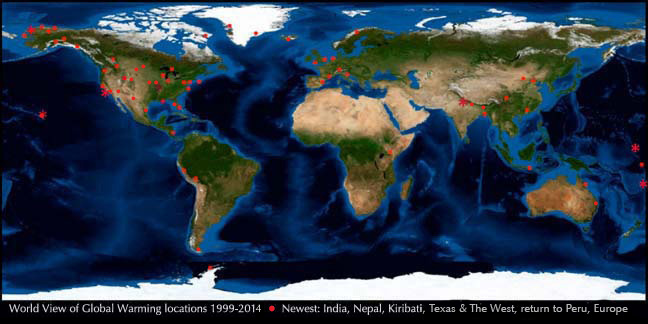
This project would be impossible without scientists and observers around the world who have provided hundreds of scientific contacts and papers. See Background, Advisors, and Reference for documentation, funders and major advisors, without whom I could not complete the work.
World View of Global Warming is a project of the Blue Earth Alliance, Seattle Washington, a 501(c)3 tax-exempt organization. The project is supported entirely by donations, grants, and license fees for the photographs. Please see information about how to contribute.
For other information about Gary Braasch's climate change projects and books, please see the books Earth Under Fire and How We Know What We Know About Our Changing Climate, and the exhibit "Climate Change in Our World" at the Books and Exhibits link on the top menu of this page.
COPYRIGHT NOTICE:
Photography and text Copyright © 2005 - 2017 (and before) Gary Braasch All rights reserved. Use of photographs in any manner without permission is prohibited by US copyright law. Photography is available for license to publications and other uses. Please contact requestinformation@worldviewofglobalwarming.org. View more of Gary Braasch's photography here.




